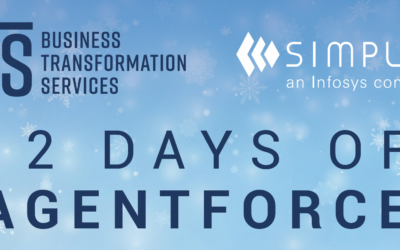We’ve spent most of this series discussing products, product catalog, configurations, and bundles within Quote-to-Cash. But the reality is that customers are rarely engaging with your company just to buy a single product or bundle. Customers are coming to you because you offer a solution to a problem. Often, a full solution will encompass many products and services working seamlessly together, and the sales process has to take all of those moving pieces into consideration.
So if your company is selling this way, Quote-to-Cash should be designed likewise. We call it “solution selling.” Let’s take a look at how to set up your organization’s Quote-to-Cash instance with solution selling in mind:
Design to configure the system, not the configuration
When you design the way your product configurations work, make sure that you are looking at not just the individual pieces but also the sum of the parts. If there are interdependencies between two products that might be separate configurations, it’s often helpful to build a System Bundle that incorporates rules that govern how these pieces fit together.
Furthermore, it’s helpful to model the dynamics of the entire solution. For instance, in our computer example, you may be purchasing computers for an entire division. In addition to purchasing business computers in this scenario, you may also infer that the customer might need to purchase networking equipment so all these computers can share information and access the internet. Understanding the dynamics of the system and the additional value you can create in your deals by understanding the larger picture can help unlock more revenue and upside than you ever imagined.
Ask about the problem your customer is trying to solve—NOT what products they’re trying to configure
When you design system-level bundles, you have to do more than just ask your reps to go beyond the product specifications. You need them to ask questions that help paint a detailed picture of the problem rather than asking targeted questions about the different product characteristics.
As a corollary, it’s also helpful to design your product model around the solution you are selling. Can you create premium, high-margin offerings around services, software, and support that work in the context of this system you’re creating rather than individually entitling assets for support? Not only will you be selling according to how your customers think about their needs, but you will also better be able to track, manage, and support entitlements down the road.
Obfuscate the complexity of systems in product bundles
Where possible, the last tenant of solution selling and one of the biggest drivers behind this transformation is the ability to obfuscate complex bill of materials, pricing, and install base objects behind a seamless solution model. Unless you’re selling to a government, multi-party pricing entity, or commodity products buyer, it’s very rare for customers to care about the individual pricing of products or how the bill of materials fits together. By rolling your complex bundles into a solution-focused rather product-focused model, you give yourself more freedom and flexibility to structure, discount, and sell in the future.
The sales cycle is becoming more customer-centric across all industries, and that means customers expect a provider and partner who thinks like they do: with the solution top of mind. Make sure your Quote-to-Cash transformation is complementary to this way of selling for better returns and customer loyalty.
Next up in the Simplus Product Series, we’ll dive into the bill of materials and discover what it can do for your business.















0 Comments